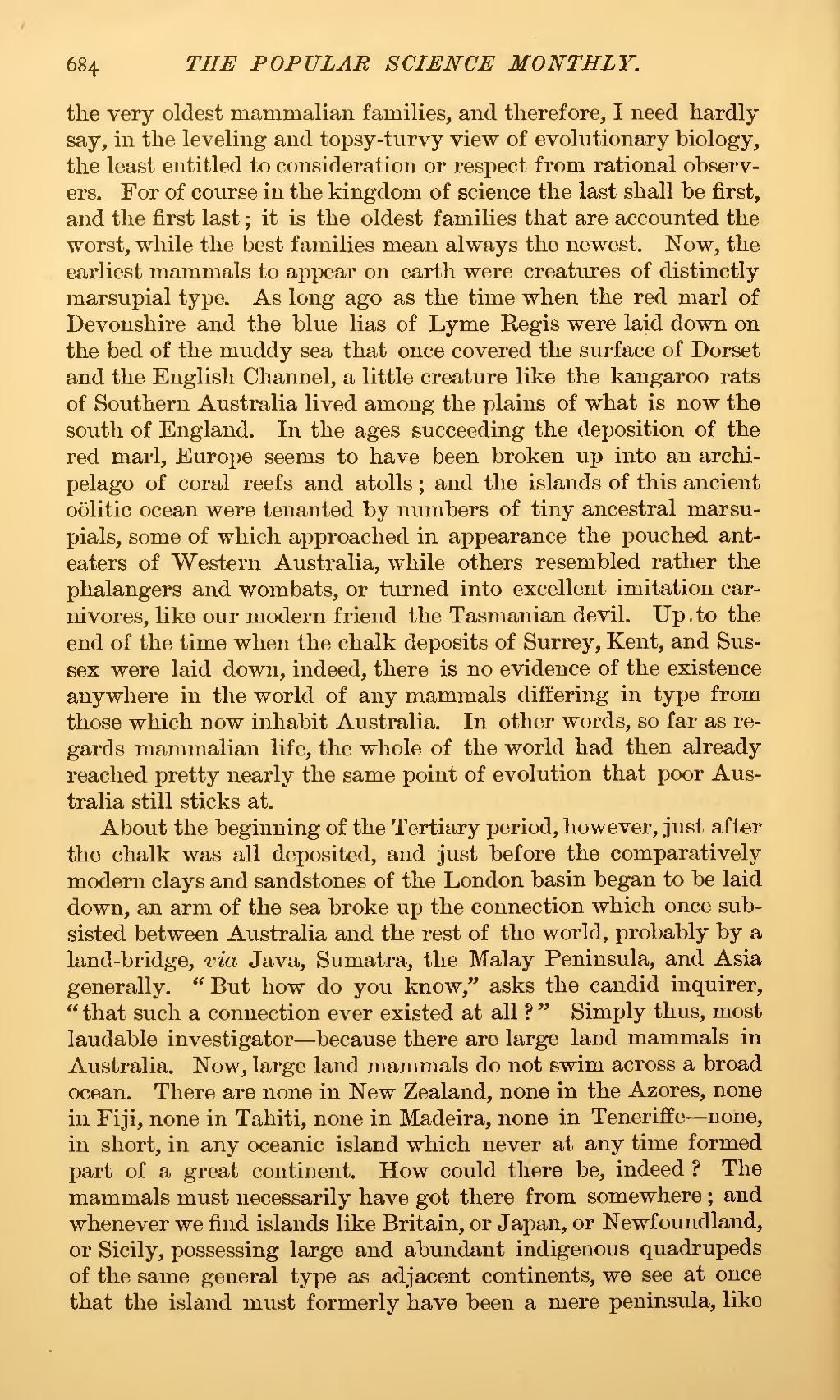the very oldest mammalian families, and therefore, I need hardly say, in the leveling and topsy-turvy view of evolutionary biology, the least entitled to consideration or respect from rational observers. For of course in the kingdom of science the last shall be first, and the first last; it is the oldest families that are accounted the worst, while the best families mean always the newest. Now, the earliest mammals to appear on earth were creatures of distinctly marsupial type. As long ago as the time when the red marl of Devonshire and the blue has of Lyme Regis were laid down on the bed of the muddy sea that once covered the surface of Dorset and the English Channel, a little creature like the kangaroo rats of Southern Australia lived among the plains of what is now the south of England. In the ages succeeding the deposition of the red marl, Europe seems to have been broken up into an archipelago of coral reefs and atolls; and the islands of this ancient oolitic ocean were tenanted by numbers of tiny ancestral marsupials, some of which approached in appearance the pouched anteaters of Western Australia, while others resembled rather the phalangers and wombats, or turned into excellent imitation carnivores, like our modern friend the Tasmanian devil. Up. to the end of the time when the chalk deposits of Surrey, Kent, and Sussex were laid down, indeed, there is no evidence of the existence anywhere in the world of any mammals differing in type from those which now inhabit Australia. In other words, so far as regards mammalian life, the whole of the world had then already reached pretty nearly the same point of evolution that poor Australia still sticks at.
About the beginning of the Tertiary period, however, just after the chalk was all deposited, and just before the comparatively modern clays and sandstones of the London basin began to be laid down, an arm of the sea broke up the connection which once subsisted between Australia and the rest of the world, probably by a land-bridge, via Java, Sumatra, the Malay Peninsula, and Asia generally. "But how do you know," asks the candid inquirer, "that such a connection ever existed at all?" Simply thus, most laudable investigator—because there are large land mammals in Australia. Now, large land mammals do not swim across a broad ocean. There are none in New Zealand, none in the Azores, none in Fiji, none in Tahiti, none in Madeira, none in Teneriffe—none, in short, in any oceanic island which never at any time formed part of a great continent. How could there be, indeed? The mammals must necessarily have got there from somewhere; and whenever we find islands like Britain, or Japan, or Newfoundland, or Sicily, possessing large and abundant indigenous quadrupeds of the same general type as adjacent continents, we see at once that the island must formerly have been a mere peninsula, like
